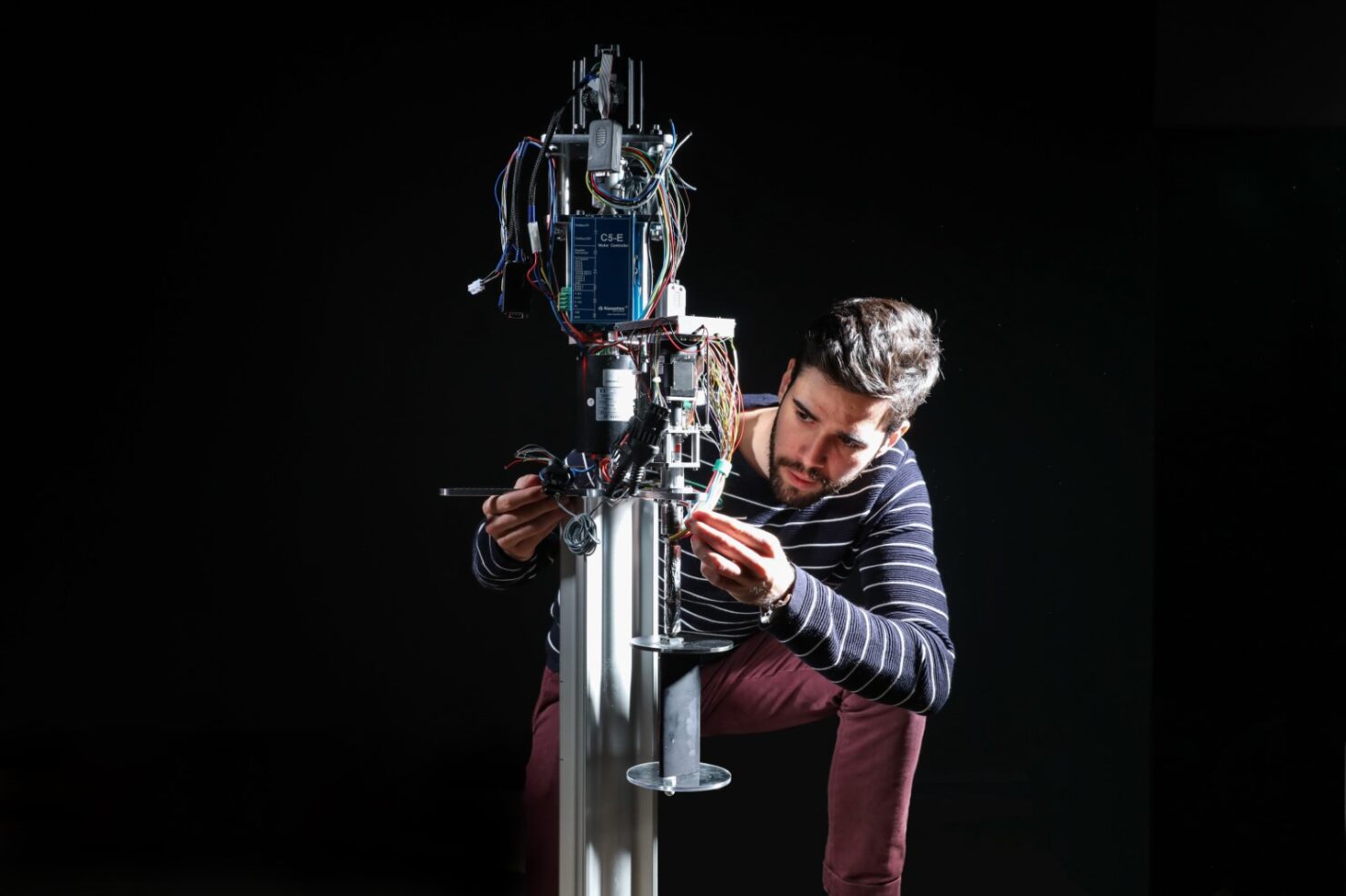Swiss researchers boost efficiency of vertical axis wind turbines

Vertical wind turbines could produce more electricity if optimised with tweaks identified by Swiss researchers.
As they are quieter, require less space and are less dangerous for birds, such vertical wind turbines could compete with conventional models in the long term, the Swiss National Science Foundation (SNSF) announced on Wednesday.
Vertical wind turbines have been around for some time. However, their development has faced challenges in terms of physics, according to the SNSF. As their axis of rotation is perpendicular to the wind, the angle between the wind and the rotor blades is constantly changing. As soon as the wind reaches a certain speed, a phenomenon known as “dynamic stall” occurs, resulting in air vortexes and turbulence.
In a study published in the journal Nature Communications, a research team from the Swiss Federal Institute of Technology in Lausanne (EPFL) led by Karen Mulleners has now demonstrated a solution to this problem: they installed a device that allows the rotors to change their tilt.
“A ship needs a crew to adjust the sails in order to stay on course,” explained Sébastien Le Fouest, first author of the study, in the press release. “If you equip the rotor blades of wind turbines with small motors, you effectively provide them with a captain so that they too can adapt to the conditions.”
Efficiency multiplied
The researchers have built a miniature turbine with a single rotor blade. They equipped it with sensors to measure the energy generated in the flow channel. This enabled them to determine how strongly the rotor blades should adapt.
In this way, the researchers increased the efficiency of their vertical wind turbine in the laboratory threefold.
“Our data shows that it is very likely that the service life and efficiency of traditional wind turbines could be matched or even exceeded,” says Fouest. This is now to be investigated in further research projects.
A collaboration with a Swiss company has already been initiated to test the results on an industrial prototype, according to the SNSF.
Adapted from German by DeepL/dkk/ac
This news story has been written and carefully fact-checked by an external editorial team. At SWI swissinfo.ch we select the most relevant news for an international audience and use automatic translation tools such as DeepL to translate it into English. Providing you with automatically translated news gives us the time to write more in-depth articles.
If you want to know more about how we work, have a look here, and if you have feedback on this news story please write to english@swissinfo.ch.

In compliance with the JTI standards
More: SWI swissinfo.ch certified by the Journalism Trust Initiative
You can find an overview of ongoing debates with our journalists here. Please join us!
If you want to start a conversation about a topic raised in this article or want to report factual errors, email us at english@swissinfo.ch.